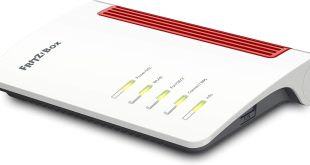Software and Configuration
Netgear's installation CD contains the powerline control and USB media extender utilities, as well as additional product support.
The powerline utility shows information such as the connection speed between each device and the internet settings. Parameters such as the device name and security configuration can be edited via the software.
Netgear recommends that the powerline adapters are not plugged into an extension strip. Instead, Netgear instructs users to plug the powerline into a wall outlet and then use the device's electrical pass-through socket to provide power to an extension strip. With the 13 Amp fuse, there is no need to worry about over-loading the powerline device's circuitry (most extension strips only support up to 13A loads).
Windows 7 automatically downloaded a driver that allowed the powerline-connected speakers to output sound from a PC. The attached speakers are given their own section of the sound configuration tool in Windows 7.
By using iTunes on a computer connected to the network, music can be sent through the Netgear Powerline Music Extender without the proprietary software installed.
For iOS devices, music can be played through Netgear's XAUB2511 equipment by using the default audio player. Android devices require the use of third-party software, such as the freely-available Twonky Beam that Netgear recommends.
Thanks to Netgear's clear, in-depth and easy-to-understand manual, the Powerline Music Extender is very easy to configure for use in all of its intended scenarios.
Audio Performance
We tested the Powerline Music Extender kit's ability to transmit audio while connected to a Samsung HT-TZ325R home cinema system at short range, and a Gear4 StreetParty 5 portable audio dock over a longer range. The Samsung home cinema system utilised the RCA phono audio jacks connection, while a 3.5mm jack was used to connect the Gear4 speaker dock.
During testing, we didn't experience any transmission problems using a Nexus 4 smartphone or a Windows 7 laptop and desktop computer. The Powerline Music Extender kit's 200Mb/s link speed was well above the required rate for high-quality audio to be transmitted.
We did notice slight quality degradation when the Powerline Music Extender was transmitting audio to the Samsung HT-TZ325R home cinema system, as opposed to a direct Bluetooth connection from the Nexus 4. This slight quality degradation could have easily been related to the physical connection which used analogue audio jacks, rather than interference from the powerline devices themselves.
USB Performance
Configuring USB devices for use with Netgear's Powerline Music Extender kit was very simple. Again, the excellent instruction manual provided all the assistance that was required in easy-to-follow steps.
We connected a printer to the powerline kit with great ease. Using Netgear's supplied USB control center software, we were able to connect our Windows 7 laptop to the HP Photosmart device and make use of its print and scan functions. The printer appeared as a local device, and our documents were sent for printing without hesitation.
We actually found that connecting our printer to the network via Netgear's Powerline Music Extender kit was far easier than connecting and configuring it via the USB port found on our Tenda N60 router. Thanks to its versatility, Netgear's XAUB2511 kit is a good product for sharing a printer's connection while the audio functions aren't required.
A USB storage device can also be connected to the Netgear Powerline Music Extender without hassle. The device appears as a network-attached drive and can be accessed by a computer that is connected to the same network.
Powerline Performance
The third key usage scenario for Netgear's Powerline Music Extender kit is as an actual powerline device. We tested the network connection speeds provided by the powerline adapters over a variety of distances.
The distances were:
- Short range – Same room, different plug sockets. Approximately 3 metres.
- Medium range – same floor of the house, neighbouring room. Approximately 6 metres.
- Long range – different floor of the house. Approximately 15 metres.
We used Totusoft's LAN speed test program as we have found it to be very reliable, consistent, and accurate when testing network connection speeds. Our results were validated by copying a file from a ‘server' computer connected to our Tenda N60 router via Gigabit Ethernet, and our ‘test' laptop which was connected to the powerline adapter via Fast Ethernet.
Using a connection over a short distance garnered a transfer rate of over 50Mb/s. Increasing the range saw the transfer speeds drop below the 50Mb/s mark, but stay well above 40Mb/s.
While the results are well below the theoretical limit of 100Mb/s (via the units' Fast Ethernet ports), factors such as losses in the electrical wiring have effects on the speed. No system is 100% efficient, especially not with data transfer, but the Netgear Powerline Music Extender kit delivered strong speed results that were perfectly capable of streaming audio to a speaker system and high-definition video to a computer at the same time.
One interesting test was conducted by connecting the ‘receiver' powerline unit to a socket that is located on a different circuit in my house. The connection speeds dropped considerably, but they were still sufficient to stream compressed HD video and mp3 audio, simultaneously.
 KitGuru KitGuru.net – Tech News | Hardware News | Hardware Reviews | IOS | Mobile | Gaming | Graphics Cards
KitGuru KitGuru.net – Tech News | Hardware News | Hardware Reviews | IOS | Mobile | Gaming | Graphics Cards










